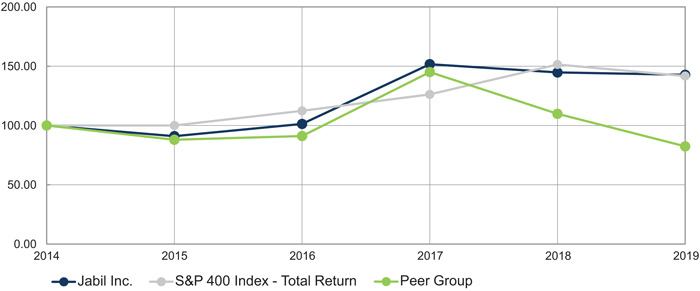settlement of related indemnification claims. In the event of a claim, we may be required to spend significant amounts of money and effort to developnon-infringing alternatives or obtain and maintain licenses. We may not be successful in developing such alternatives or obtaining or maintaining such licenses on reasonable terms or at all. We, our suppliers or our customers may be required to or decide to discontinue products, and such discontinuance may result in a significant decrease in our business, and could have a material adverse effect on our results of operations and financial position.
The success of certain aspects of our business depends in part on our ability to obtain, protect and leverage intellectual property rights.
In certain circumstances, we strive to obtain and protect certain intellectual property rights related to solutions, designs, processes and products that we create. We believe that obtaining a significant level of protected proprietary technology may give us a competitive advantage. In addition to selectively relying on patent rights, we rely on unpatented proprietaryknow-how and trade secrets, and employ various methods, includingnon-disclosure agreements with our customers, employees and suppliers and our internal security systems, policies and procedures to protect ourknow-how and trade secrets. However, we cannot be certain the measures we employ will result in protected intellectual property rights or will result in the prevention of unauthorized use of our technology. If we are unable to obtain and protect intellectual property rights embodied within our solutions, designs, processes and products, this could reduce or eliminate competitive advantages of our proprietary technology, which would harm our business and could have a material adverse effect on our results of operations and financial position.
Even if we take steps to protect certain intellectual property rights, these mechanisms may not afford complete or sufficient protection, and misappropriation may still occur. Further, there can be no assurance that we will be able to acquire or enforce our patent or other rights, if any, and that others will not independently develop similarknow-how and trade secrets, or develop better solutions, designs, processes and products than us. We have not historically sought patent protection for many of our proprietary processes, designs or other patentable intellectual property. Further, we may not be able to prevent current and former employees, contractors and other parties from breachingnon-disclosure agreements and misappropriating proprietary information. If any of the foregoing occur, it could impair our ability to compete with others in our industry, result in a significant decrease in our business and/or could have material adverse effect on our results of operations and financial position.
Any delay in the implementation of our information systems could disrupt our operations and cause unanticipated increases in our costs.
We are currently in the process of completing the installation of an enterprise resource planning system in certain of our manufacturing facilities, which will replace the existing planning and financial information systems. Any delay in the implementation of these information systems could result in material adverse consequences, including disruption of operations, loss of information and unanticipated increases in costs.
Disruptions to our information systems, including security breaches, losses of data or outages, and other security issues, could adversely affect our operations.
We rely on information systems, some of which are owned and operated by third parties, to store, process and transmit confidential information, including financial reporting, inventory management, procurement, invoicing and electronic communications, belonging to our customers, our suppliers, our employees and/or us. We attempt to monitor and mitigate our exposure and modify our systems when warranted and we have implemented certain business continuity items including data backups at alternative sites. Nevertheless, these systems are vulnerable to, and at times have suffered from, among other things, damage from power loss or natural disasters, computer system and network failures, loss of telecommunication services, physical and electronic loss of data, terrorist attacks, security breaches, cyberattacks and computer viruses. We regularly face attempts by others to access our information systems in an unauthorized manner, to introduce malicious software to such systems or both. The increased use of mobile technologies and the internet of things can heighten these and other operational risks. If we, or the third parties who own and operate certain of our information systems, are unable to prevent such breaches, losses of data and outages, our operations could be disrupted. Also, the time and funds spent on monitoring and mitigating our exposure and responding to breaches, including the training of employees, the purchase of protective technologies and the hiring of additional employees and consultants to assist in these efforts could adversely affect our financial results. The increasing sophistication of cyberattacks requires us to continually evaluate the threat landscape and new technologies and processes intended to detect and prevent these attacks. There can be no assurance that the security measures and systems configurations we choose to implement will be sufficient to protect the data we manage. Any theft or misuse of information resulting from a security breach could result in, among other things, loss of significant and/or sensitive information, litigation by affected parties, financial obligations resulting from such theft or misuse, higher insurance premiums, governmental investigations, negative reactions from current and potential future customers (including potential negative financial
20

